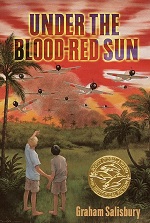As COVID-19 deaths spiked in 2020, Suzanne Firstenberg’s public art installation "In America: How could this happen…"
History Explorer Results (44)
Related Books (4)

Grade Range:
K-12
Resource Type(s):
Artifacts, Primary Sources
Date Posted:
9/17/2009
This intricate handmade lace baby cap dates from the turn of the 20th century and was probably worn for a baby's christening. The baptism of newborns is both a religious and a social ceremony, strengthening ties among members of a community. Compadrazgo, the special relationship between

Grade Range:
K-12
Resource Type(s):
Artifacts, Primary Sources
Date Posted:
9/17/2009
The civilizations of pre-Hispanic Mexico recorded their histories, religious beliefs, and scientific knowledge in books called codices. Codices are folded pieces of hide or bark that depict both mundane and spiritual scenes with images, symbols, and numbers. Scribes and painters busily recorded d

Grade Range:
K-12
Resource Type(s):
Artifacts, Primary Sources
Date Posted:
9/17/2009
La Malinche, the title of this lithograph, was the indigenous woman who translated for Cortés between Maya, Náhuatl, and Spanish during his first years in Mexico. Considered either as a traitor or a founding mother by some Mexicans, La Malinche was Cortés' lover and the mother of his

Grade Range:
K-12
Resource Type(s):
Artifacts, Primary Sources
Date Posted:
9/17/2009
This large, hand-held drum, known in Puerto Rico as a pandereta, is an essential instrument in the musical genre known as plena. The plena was developed by agricultural workers at the end of the 19th century on the southern coast of the island, around the city of Ponce. Consider

Grade Range:
K-12
Resource Type(s):
Artifacts, Primary Sources
Date Posted:
9/17/2009
This tile is from La Fortaleza, a military and government complex in San Juan built to defend the city from naval attacks. Construction began in 1533 and was finished in 1540. This tile resembles the Spanish ceramic style of Talavera, a tile factory established in the 16th century near the city o

Grade Range:
6-12
Resource Type(s):
Reviewed Websites
Date Posted:
8/6/2009
This website, produced by The Lewis and Clark Fort Mandan Foundation, is a comprehensive and fascinating history of the Lewis and Clark expedition. Ten engaging discovery paths, containing primary source documents, journal excerpts, brief essays and aerial photography, will help studen

Grade Range:
K-12
Resource Type(s):
Artifacts, Primary Sources
Date Posted:
5/8/2009
Virginia Lee Mead wore this salmon-pink silk satin dress when she was a young woman living in New York City's Chinatown, where her father, Lee B. Lok, a first-generation immigrant, ran a general store. The full-length dress is a traditional style that younger second-generation Chinese women wore

Grade Range:
K-12
Resource Type(s):
Artifacts, Primary Sources
Date Posted:
4/15/2009
Aladdin Industries profited from the success of The Jetsons television cartoon series in the fall of 1963 by introducing a domed lunch box featuring that space-traveling suburban family and their robotic maid. American notions of family life in the 1960s traveled effortlessly outward to

Grade Range:
K-12
Resource Type(s):
Artifacts, Primary Sources
Date Posted:
12/18/2008
This is a Bata Cubana, or Cuban Rumba dress, donated to the Smithsonian by Celia Cruz, the great Cuban salsa singer in 1997. An adaptation of the traditional Cuban rumba dress, it was made in the United States by Cuban-born designer José Arteaga. The Bata Cubana has its roots in the 19th century

Grade Range:
K-12
Resource Type(s):
Artifacts, Primary Sources
Date Posted:
11/14/2008
Laying the groundwork for the Chicano movement of the 1960s, organizations like the American G.I. Forum began advocating on behalf of Hispanic veterans who were denied the educational, health care, housing, and other rights guaranteed by the G.I. Bill. Often working in concert with the League of













